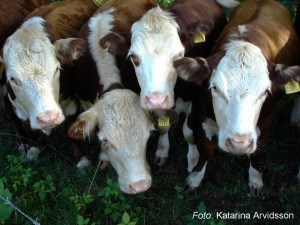Project Manager: Katarina Arvidsson, Department of Animal Environment and Health, SLU.
Project Group: Johan Höglund, Department of Biomedical Sciences and Veterinary Public Health, SLU; Henrik Österlund and Dan Rosenholm, Hencol AB.
The goal of this project is to develop a novel method for animal health monitoring for grazing cattle. It will be based on a system for unmanned automatic precision weighing when kept on pasture, where alarms are obtained for animals with abnormal weight gain curves. The project focuses primarily on the detection of pasture borne parasite infections in calves, but the method could be further developed to include other diseases that impair animal growth performance. Thus we will try out if a new mathematical model of weight gain can be used for early detection of parasitic infection in calves.
At alarm, so called targeted selective treatment (TST) will be undertaken. This means that only the affected individuals are dewormed with an anthelmintic. An advantage of the TST approach is that the use of anthelmintics is minimised, which is in accordance with the rules of organic production. Comparison with conventional visual monitoring will be done, where our hypothesis is that the unmanned precision monitoring is better and reduces the use of anthelmintics. The method leads to increased animal health and productivity in livestock grazing biodiverse semi-natural pastures in organic production systems without prophylactic mass deworming.
The project is a collaboration between SLU with Götala beef and lamb centre and the company Hencol AB.
